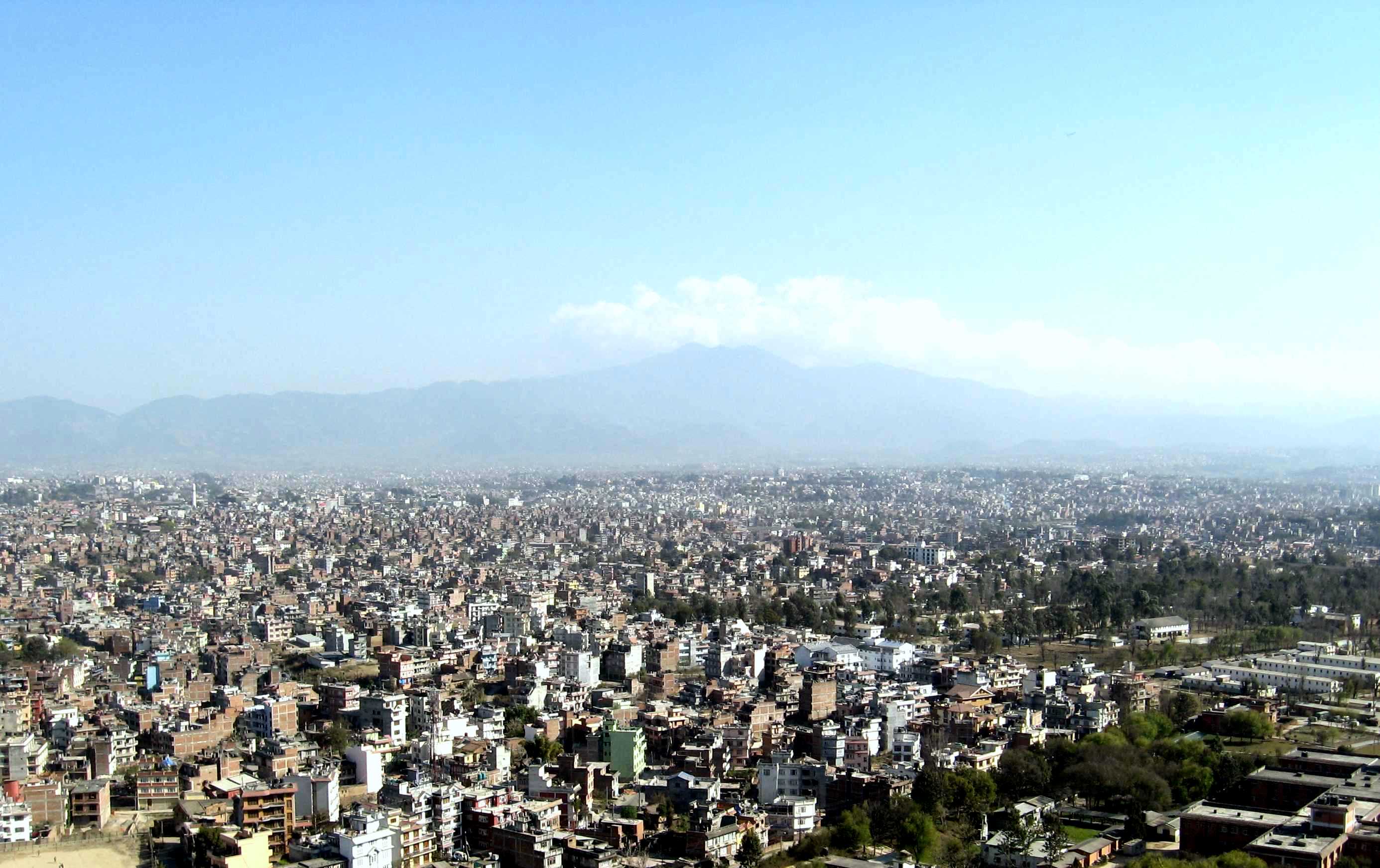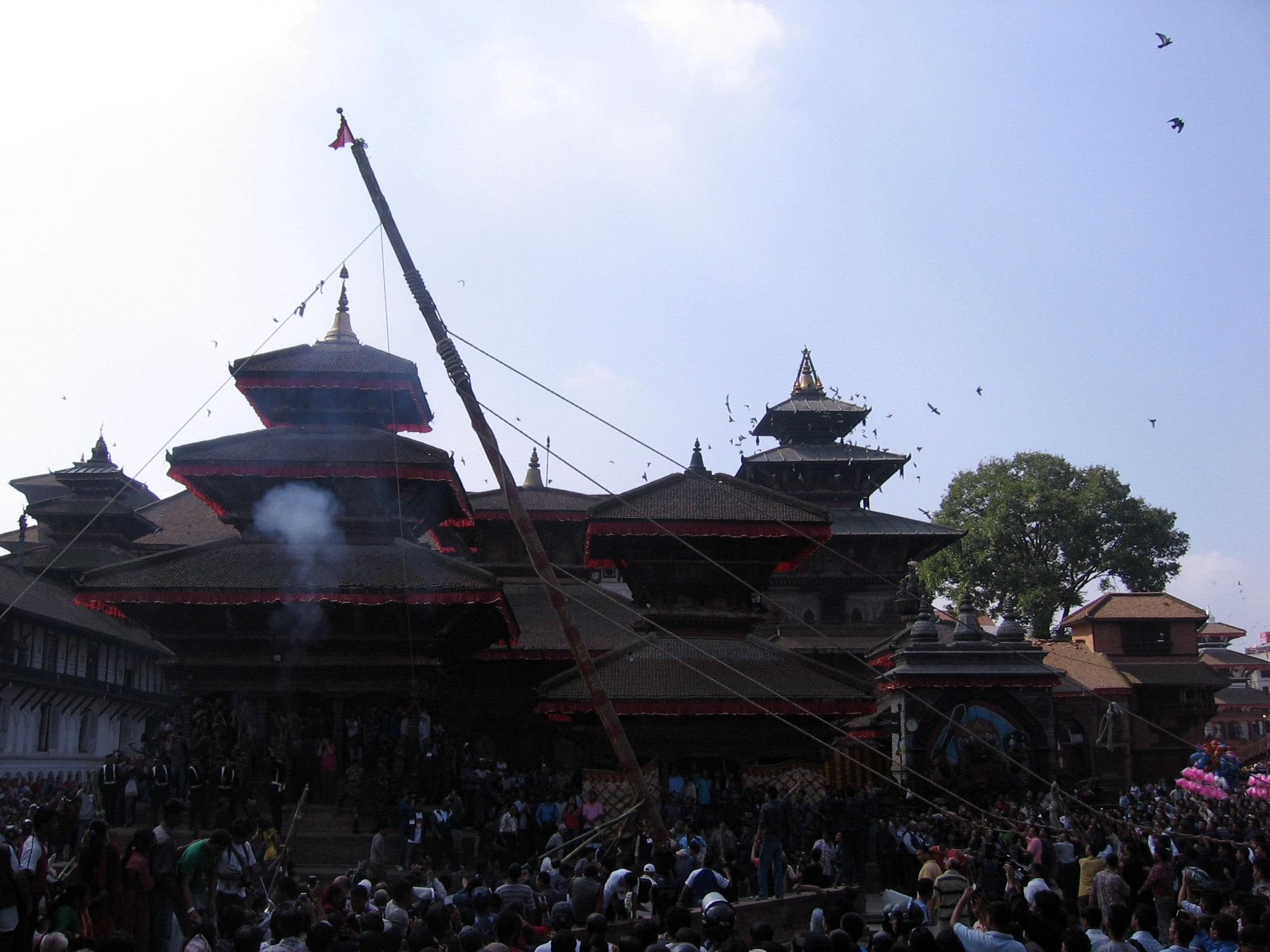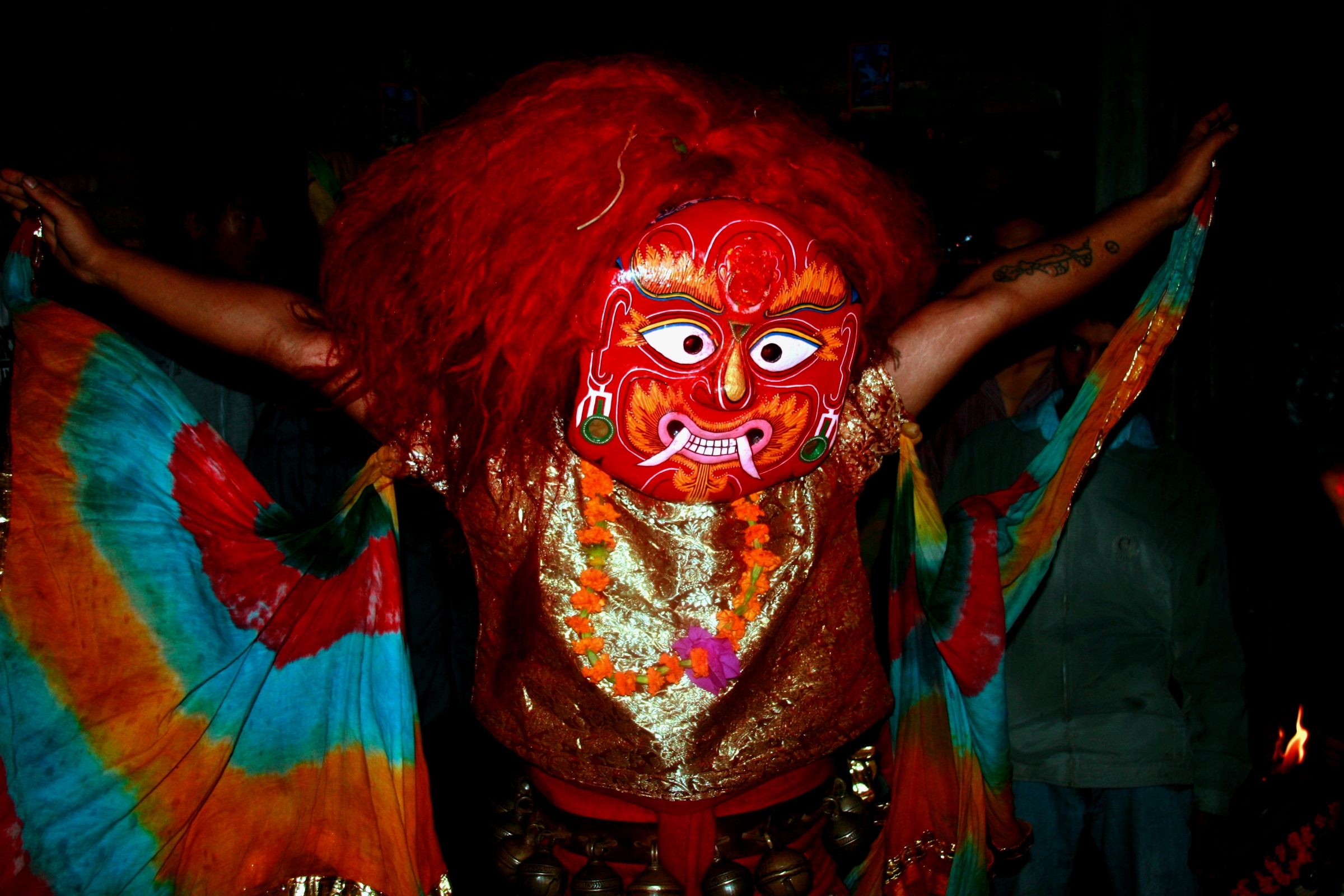|
Gunakamadeva
Gunakamadeva was a Lichhavi ruler who founded the city of Kathmandu in 723 CE. He is also credited to have started Yenya and Lakhey Jatra. He was known for his tantric abilities which was demonstrated by him entering Shantipur in Swayambhunath. During his rule, he renovated Pashupatinath temple, Raktakali temple, Kankeshwari temple and Panchalinga Bhairav temple. He was succeeded by Udayadeva. Achievements Gunakamadeva is credited with founding Kathmandu, Patan and Sankhu. With the development of cities, he transformed agrarian society to an industrial city trading between India and Tibet. See also * History of Kathmandu The history of the city of Kathmandu, which is inseparable from that of the Kathmandu valley, dates back to ancient times. Ancient Kathmandu valley Archaeological explorations indicate that Kathmandu and the two other sister towns in the valle ... References {{Reflist External links Statue of Gunakamadeva History of Kathmandu Nepalese monarchs Licchavi ... [...More Info...] [...Related Items...] OR: [Wikipedia] [Google] [Baidu] |
History Of Kathmandu
The history of the city of Kathmandu, which is inseparable from that of the Kathmandu valley, dates back to ancient times. Ancient Kathmandu valley Archaeological explorations indicate that Kathmandu and the two other sister towns in the valley were the oldest towns and are traced to the period between 167 BC and 1 AD. Excavations conducted at Hadigaon and Lubhu in southern part of the valley, in Kathmandu, have unearthed brick walls and Stone Age tools. In 1992, workers digging a trench for the foundation of a house in Maligaon in Eastern Kathmandu discovered a life size (171 x 49 cm) standing male figure carved in pale sandstone, clearly made in the Kushan style. The sculpture was donated by an early Licchavi or pre-Licchavi monarch, named Jaya Varman with an inscription on the pedestal. Although the identity of the figure is contested, it is the authors' opinion that it is likely Jaya Varman himself who is portrayed. It is the oldest known inscription from the Kathman ... [...More Info...] [...Related Items...] OR: [Wikipedia] [Google] [Baidu] |
Kathmandu
, pushpin_map = Nepal Bagmati Province#Nepal#Asia , coordinates = , subdivision_type = Country , subdivision_name = , subdivision_type1 = Provinces of Nepal, Province , subdivision_name1 = Bagmati Province , subdivision_type2 = List of districts of Nepal, District , subdivision_name2 = Kathmandu District, Kathmandu , established_title = , founder = Manjushri , parts_type = No. of Ward (electoral subdivision), Wards , parts = 32 , seat_type = , seat = , government_footnotes = , government_type = Mayor–council government , governing_body = Kathmandu Metropolitan Government, , leader_title = Mayor of Kathmandu, Mayor , leader_name = Balendra Shah (Independent politician, Ind.) , leader_title1 = Deputy mayor , leader_name1 = Su ... [...More Info...] [...Related Items...] OR: [Wikipedia] [Google] [Baidu] |
Yenya
Indra Jātrā, also known as Yenyā (Nepal Bhasa: येँयाः), is the biggest religious street festival in Kathmandu, Nepal. The celebrations consist of two events, Indra Jātrā and Kumāri Jātrā. Indra Jātrā is marked by masked dances of deities and demons, displays of sacred images and tableaus in honor of the deity Indra, the king of heaven. Kumāri Jātrā is the chariot procession of the living goddess Kumari. Family members deceased in the past year are also remembered during the festival. The main venue of the festivities is Kathmandu Durbar Square. The celebrations last for eight days from the 12th day of the bright fortnight to the 4th day of the dark fortnight of Yanlā (ञला), the eleventh month in the lunar Nepal Era calendar. Indra Jatra was started by King Gunakamadeva- (गुणकामदेव) to commemorate the founding of the Kathmandu city in the 10th century. Kumari Jatra began in the mid-18th century. The celebrations are held acco ... [...More Info...] [...Related Items...] OR: [Wikipedia] [Google] [Baidu] |
Licchavi (kingdom)
Licchavi (also ''Lichchhavi'', ''Lichavi'') was a kingdom which existed in the Kathmandu Valley in modern-day Nepal from approximately 400 to 750 CE. The Licchavi clan originated from Vaishali, and conquered Kathmandu Valley. The Lichchhavis elected an administrator and representatives to rule them. The ruling period of this dynasty was called the Golden Period of Nepal. A table of the evolution of certain Gupta characters used in Licchavi inscriptions prepared by Gautamavajra Vajrācārya can be found online. Records It is believed that a branch of the Lichhavi clan, having lost their political fortune in Vaishali (Bihar), came to Kathmandu, attacking and defeating the last Kirat King Gasti . In the Buddhist Pali canon, the Licchavi are mentioned in a number of discourses, most notably the Licchavi Sutta, the popular Ratana Sutta and the fourth chapter of the Petavatthu. The Mahayana Vimalakirti Sutra also spoke of the city of Vaishali as where the lay Licchavi bodhis ... [...More Info...] [...Related Items...] OR: [Wikipedia] [Google] [Baidu] |
Lakhey
Lākhey (Nepal Bhasa: लाखे or , lā-khé) (alternative spellings Lākhe, Lākhay, ) is the dance of a demon in the carnival of God. Durbar Square, a historic plaza in Kathmandu, Nepal, facing ancient palaces and adorned by Hindu temples, is always full of eager crowds on the last day of Indra Jatra, the festival celebrating Indra, the Hindu king of heaven. On this divine stage, Lakhe the demon dances among gods and deities relentlessly and carelessly. He is depicted with a ferocious face, protruding fangs, and a mane of red or black hair. Lakhes figure prominently in the traditional Newar culture of Nepal Mandala. The Lakhe tradition is found in the Kathmandu Valley and other Newar settlements throughout Nepal. Lakhes are said to be demons who used to live in the forests and later became protectors to the townspeople. A female Lakhe is known as Lasin (). The other common legendary being in Nepalese folklore is the Khyāh, who is depicted as a fat, hairy ape-l ... [...More Info...] [...Related Items...] OR: [Wikipedia] [Google] [Baidu] |
Tantra
Tantra (; sa, तन्त्र, lit=loom, weave, warp) are the esoteric traditions of Hinduism and Buddhism that developed on the Indian subcontinent from the middle of the 1st millennium CE onwards. The term ''tantra'', in the Indian traditions, also means any systematic broadly applicable "text, theory, system, method, instrument, technique or practice". A key feature of these traditions is the use of mantras, and thus they are commonly referred to as Mantramārga ("Path of Mantra") in Hinduism or Mantrayāna ("Mantra Vehicle") and Guhyamantra ("Secret Mantra") in Buddhism. Starting in the early centuries of the common era, newly revealed Tantras centering on Vishnu, Shiva or Shakti emerged. There are tantric lineages in all main forms of modern Hinduism, such as the Shaiva Siddhanta tradition, the Shakta sect of Sri-Vidya, the Kaula, and Kashmir Shaivism. In Buddhism, the Vajrayana traditions are known for tantric ideas and practices, which are based on Ind ... [...More Info...] [...Related Items...] OR: [Wikipedia] [Google] [Baidu] |
Swayambhunath
Swayambhu (Devanagari: स्वयम्भू स्तूप; new, स्वयंभू; sometimes Swayambu or Swoyambhu) is an ancient religious complex atop a hill in the Kathmandu Valley, west of Kathmandu city. The Tibetan name for the site means 'Sublime Trees' ( Wylie: ''Phags.pa Shing.kun''), for the many varieties of trees found on the hill. However, ''Shingkun'' may be of the local in Tamang Bhasa name for the complex, Swayambhu, meaning 'self-sprung'. For the Buddhist Newars, in whose mythological history and origin myth as well as day-to-day religious practice Swayambhunath occupies a central position, it is probably the most sacred among Buddhist pilgrimage sites. For Tibetans and followers of Tibetan Buddhism, it is second only to Boudha. Swayambhunath is the Hindu name. The complex consists of a stupa, a variety of shrines and temples, some dating back to the Licchavi period. A Tibetan monastery, museum and library are more recent additions. The stupa has ... [...More Info...] [...Related Items...] OR: [Wikipedia] [Google] [Baidu] |
Pashupatinath Temple
Pashupatinath Temple ( ne, श्री पशुपतिनाथ मन्दिर) is a Hindu temple dedicated to Lord Shiva, and is located in Kathmandu, Nepal. This temple was classified as a World Heritage Site in 1979. This "extensive Hindu temple precinct" is a "sprawling collection of temples, ashrams, images and inscriptions raised over the centuries along the banks of the sacred Bagmati river", and is one of seven monument groups in UNESCO's designation of Kathmandu Valley. The temple is one of the Paadal Petra Sthalams on the continent. History The exact date of the temple's construction is uncertain, but the current form of the temple was constructed in 1692 CE. Over time, many more temples have been erected around the two-storied temple, including the Vaishnava temple complex with a Rama temple from the 14th century and the Guhyeshwari Temple mentioned in an 11th-century manuscript. Pashupatinath Temple is the oldest Hindu temple in Kathmandu. It is not kn ... [...More Info...] [...Related Items...] OR: [Wikipedia] [Google] [Baidu] |
Nepalese Monarchs
Nepali or Nepalese may refer to : Concerning Nepal * Anything of, from, or related to Nepal * Nepali people, citizens of Nepal * Nepali language, an Indo-Aryan language found in Nepal, the current official national language and a language spoken in India * Nepal Bhasa, a Sino-Tibetan language found in Nepal, formerly the official national language * Nepalese literature * Nepalese cuisine * Nepalese culture * Nepali cinema * Nepali music Other uses * ''Nepali'' (film), a 2008 Indian Tamil-language film See also * Nepal (other) * * * Languages of Nepal Languages of Nepal constitutionally called Nepalese languages are the languages having at least an ancient history or origin inside the sovereign territory of Nepal spoken by Nepalis. The 2011 National census lists 123 languages spoken as a mot ... * Nepal is a south Asian country with a population of nearly 30 million. {{disambiguation Language and nationality disambiguation pages ... [...More Info...] [...Related Items...] OR: [Wikipedia] [Google] [Baidu] |
Licchavi Kingdom
Licchavi (also ''Lichchhavi'', ''Lichavi'') was a kingdom which existed in the Kathmandu Valley in modern-day Nepal from approximately 400 to 750 CE. The Licchavi clan originated from Vaishali, and conquered Kathmandu Valley. The Lichchhavis elected an administrator and representatives to rule them. The ruling period of this dynasty was called the Golden Period of Nepal. A table of the evolution of certain Gupta characters used in Licchavi inscriptions prepared by Gautamavajra Vajrācārya can be found online. Records It is believed that a branch of the Lichhavi clan, having lost their political fortune in Vaishali (Bihar), came to Kathmandu, attacking and defeating the last Kirat King Gasti . In the Buddhist Pali canon, the Licchavi are mentioned in a number of discourses, most notably the Licchavi Sutta, the popular Ratana Sutta and the fourth chapter of the Petavatthu. The Mahayana Vimalakirti Sutra also spoke of the city of Vaishali as where the lay Licchavi bodhisattv ... [...More Info...] [...Related Items...] OR: [Wikipedia] [Google] [Baidu] |



.png)


